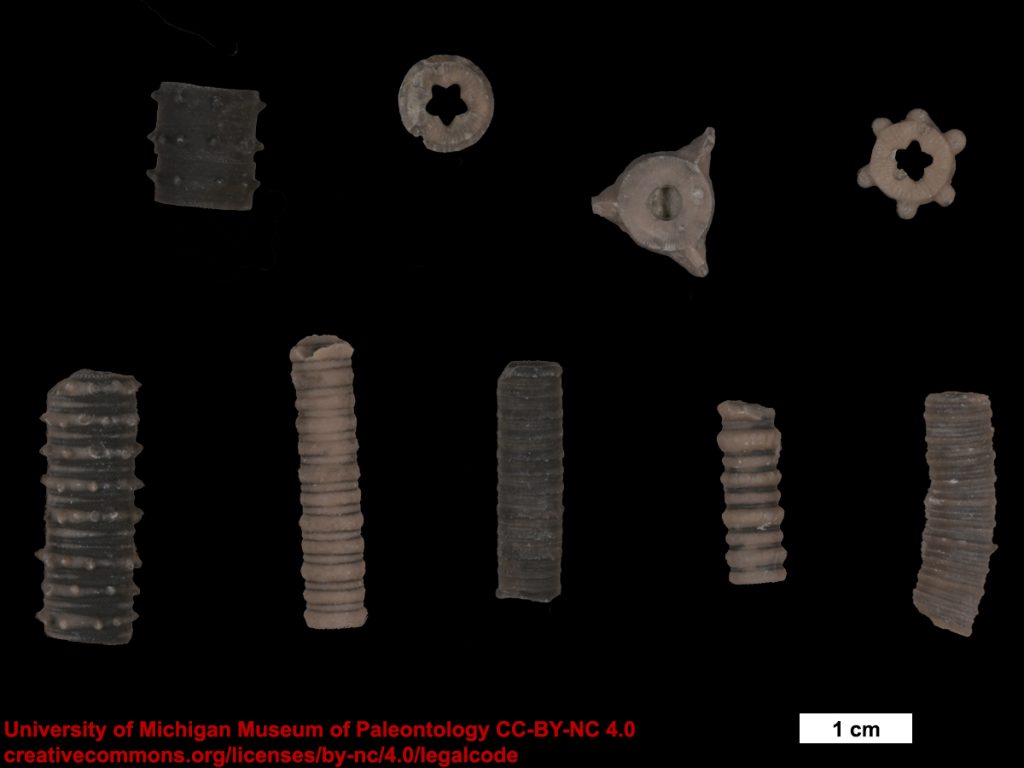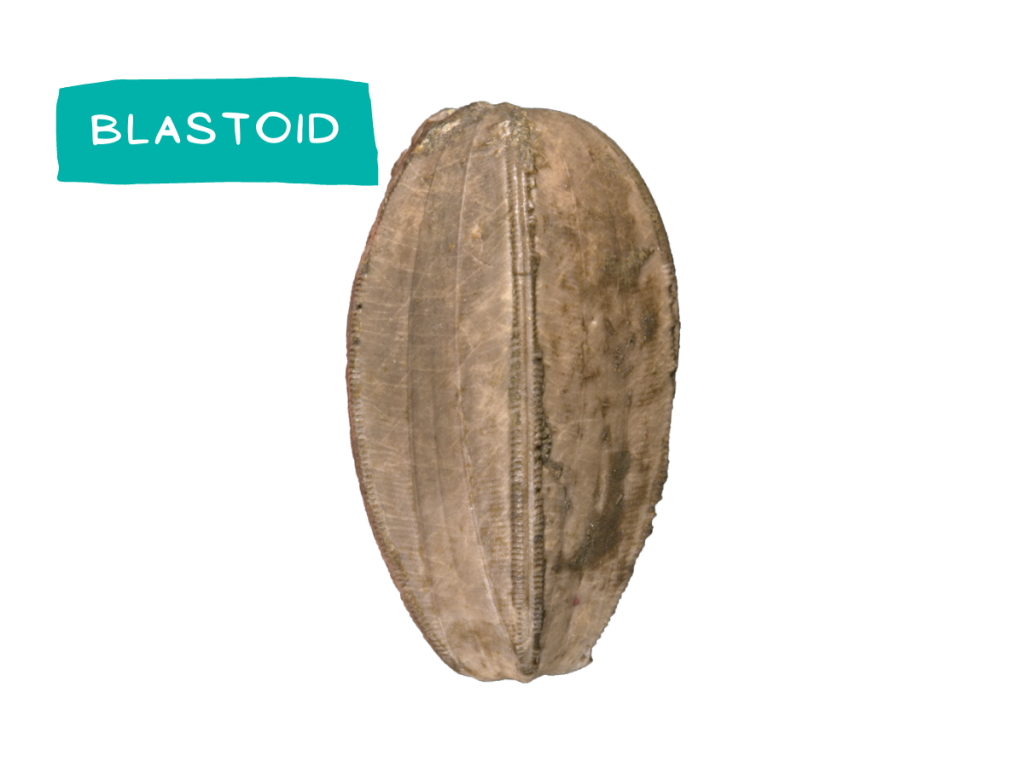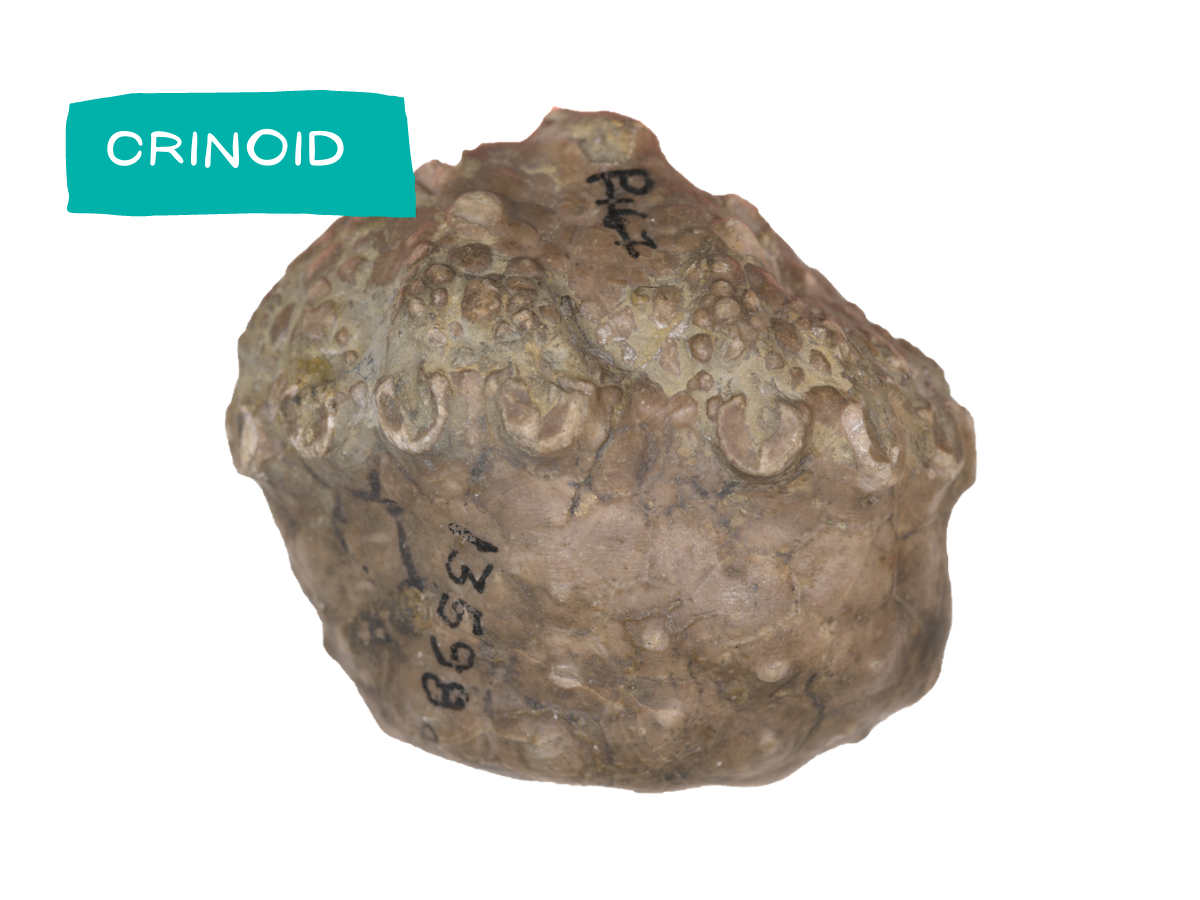
Sea Lilies
Sea lilies and related animals often have a star-like pattern or five-fold symmetry. These animals are related to sea stars and sea urchins but their ‘five-ish-ness’ may come in stranger shapes and sizes. They may even look like small rocks.
Sea lilies and blastoids are common finds in Michigan. These animals would have had a root like structure to attach them to the seafloor, a stem to elevate them in the water, and arm like structures to help with feeding. Usually, we find pieces of the stems or their bodies – sometimes called a calyx, theca, or cup. The calyx is often found without the crinoid’s arms, and this is like finding a flower bulb with no petals. You can still see where the ‘petals’ may go, and where the ‘flower’s’ stem once was.
Blastoid (Placoblastus obovatus)
In Michigan, this type of blastoid can be found in rocks Middle Devonian (393 – 382 million years ago) in age.
Blastoids are a group of echinoderms (marine animals like star fish, sea lilies, and sea cucumbers) that lived in Paleozoic seas. Blastoids look similar to their relatives, the crinoids (sea lilies), but their bodies are constructed in different ways. Placoblastus, and other nucleocrinids, are shaped like tiny blimps. Their making them easily recognizable compared to other blastoids, which are more conical or spherical.
Identification Tips
1. Usually five petal like structures called ambulacra (feeding apparatus)
2. Round rose bud shaped body called a theca. Sometimes takes the shape of a blimp, bullet, cone, golf tee, or orb
3. One opening where the petals radiate outward (the mouth) and another opening between two petals (the anus)
See a 3D Model of the blastoid
Doesn’t look exactly like what you found? Explore more 3D models of related animals (Class Blastoidea, Phylum Echinodermata).

Crinoid (Megistocrinus nodosus)
In Michigan, crinoid material can be found in rocks ranging from the Ordovician to Mississippian (485 – 323 million years ago) and are commonly found in Middle Devonian (393 – 382 million years ago) rocks.
Found on the floors of ancient seas and oceans 541 million years ago, these are a very common fossil to find. Often, sea lily fossils may be hard to distinguish right away if you are looking specifically for the sea lily arms. Often pieces of stem or just the caylx (body/cup) is found. The example below is one of these types of fossils. To see an example of a crinoid fossil with arms and a stem, see the model of Megistocrinus nodosus.
Identification Tips
1. Often cup-shaped rounded bodies called a calyx
2. Arm facets coming off the top of the calyx
3. Clear arrangement of different shapes of body plates that build the calyx
Doesn’t look exactly like what you found? Explore more 3D models of related animals (Class Crinoidea, Phylum Echinodermata).


It is more common to find fossilized pieces of crinoid columnals (top row) and stems (bottom row) as crinoids and other echinoderms fall into many pieces shortly after death.




